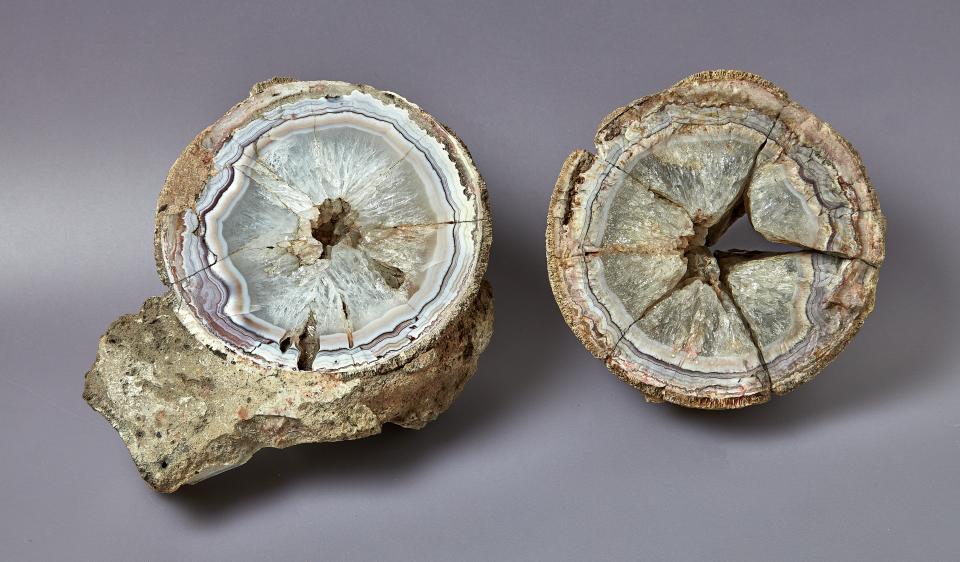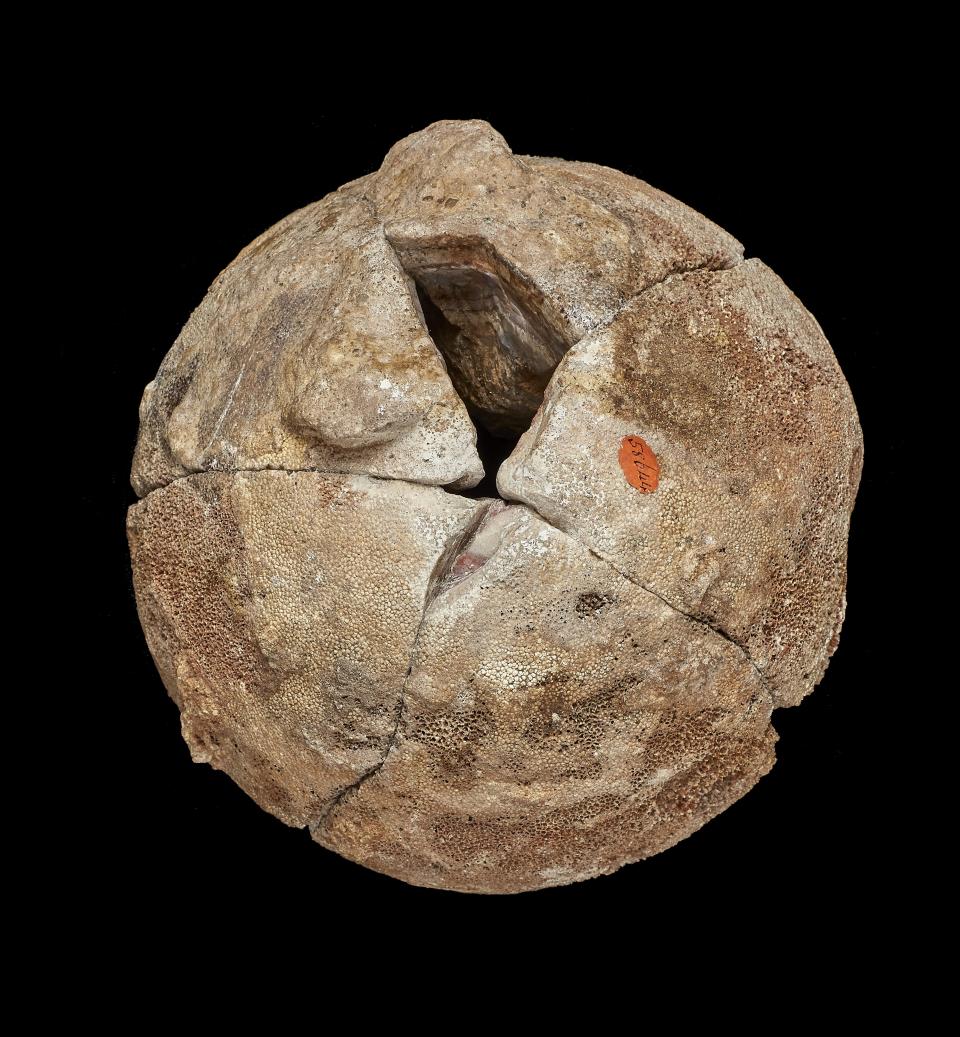It was thought to be a mineral for over a century. It actually may be the first known dinosaur egg
A mineral collected 140 years ago turned out to have surprise inside of it from one of the largest dinosaurs to ever exist.
In 1883, an agate specimen measuring 15 centimeters from central India was registered in a mineralogy collection at the Natural History Museum in London. Spherical with a light pink and white interior, the mineral spent over a century in the collection "not thought to hold much other significance," the museum said.
It wasn't until Robin Hansen, a mineral curator at the the museum, visited a mineral show in France in 2018, and noticed the agate specimen had a close resemblance to a prehistorical fossil.
"While I was looking around the show, a dealer showed me an agatised dinosaur egg, which was spherical, had a thin rind, and dark agate in the middle," Hansen said in a statement. "That was the lightbulb moment when I thought: 'Hang on a minute, that looks a lot like the one we've just put on display in the Museum!'"

Mineral taken to dinosaur experts
After seeing the similar specimen in France, Hansen came back to London and took the mineral to the museum's dinosaur experts, Paul Barrett and Dr. Susannah Maidment.
Upon inspection, the experts concluded it was the right size and shape of an egg, and a thin layer around the mineral looked like a shell. It appeared to show other spherical objects were at one point clustered to the egg, but the density of the mineral made it impossible to see finer details, according to the museum.
"It is only now that we have recognized that this specimen has something extra special - the agate has infilled this spherical structure, which turns out to be a dinosaur egg," Hansen said.
Dinosaur history?
Hansen traced the origins of the specimen and found it was collected in India between 1817 and 1843. The timeline proves to be significant because it likely was found before the word 'dinosaur' existed; the term was first used in 1842, according to Smithsonian Magazine.
The egg was also collected at least 80 years before dinosaur eggs were scientifically recognized, the museum said, adding that they were unknowingly found by humans for thousands of years before the first confirmation of dinosaur eggs in Mongolia in 1923.
"It was identified and catalogued correctly as an agate in 1883 using the scientific knowledge available at the time," Hansen said. "It is only now that we have recognized that this specimen has something extra special – the agate has infilled this spherical structure, which turns out to be a dinosaur egg."

What to know about the egg
Based on where the egg was located, the experts are "pretty certain" it's a dinosaur egg about 60 million years old.
The size, shape and surface of the shell are consistent with titanosaur eggs, which were the most common dinosaurs living in present-day India at the time they were laid.
How did the mineral form in the egg?
The museum said India over 60 million years ago had lots of volcanic activity with huge lava flows. Past research showed fossils have been found in between different layers, meaning lava flowed and then titanosaurs populated the area before it was covered in lava again.
Experts said the dinosaurs may have laid eggs there because of the warm ground. They believe that after this egg was laid, a nearby volcano erupted and the debris and lava covered it. After the rock solidified, the water inside the egg percolated through the rock and shell to create the agate.
The titanosaur
Growing up to 121 feet and weighing up to 62 tons, the titanosaur was the largest dinosaur to exist and possibly largest land animal ever. Despite their large frame, the species laid some of the smallest eggs, something Barrett said may be a result of them laying large clutches of eggs rather than one or a few of them.
"It looks like they just laid a lot of eggs and hoped that some of them made it to adulthood, rather than laying one or two that they then had to invest a lot more parental care in when hatched," Barrett said.
Dig deeper
Flightless giants: How 1,200-year-old eggs from a 9-foot tall, 1,500-pound bird led to a scientific breakthrough
Now that's one giant penguin: Fossilized bones of 340-pound 'monster bird' discovered in New Zealand
'Dinosaur mummy': Researchers believe they found one of the best preserved dinosaurs ever
Iowa monster: This crocodile-like predator roamed Iowa's waters more than 300 million years ago
Follow Jordan Mendoza on Twitter: @jordan_mendoza5.
This article originally appeared on USA TODAY: First known dinosaur egg may be mineral found 140 years ago in India

